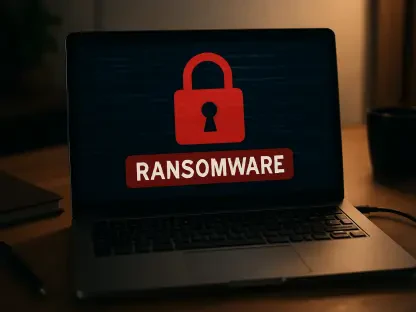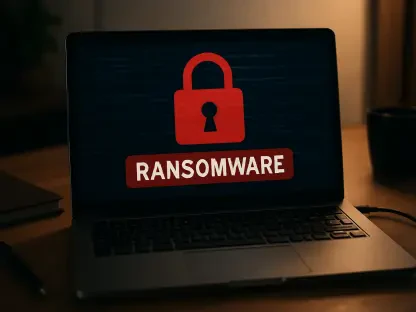In a startling revelation that underscores the relentless pace of cyber threats, a critical vulnerability in XWiki servers, identified as CVE-2025-24893, has emerged as a prime target for malicious actors seeking to build botnets and mine cryptocurrency. Discovered just recently, this flaw enables remote code execution, opening the door for attackers to seize control of vulnerable systems with alarming ease. Within days of its identification, the U.S. Cybersecurity and Infrastructure Security Agency (CISA) flagged it as a high-priority threat, adding it to its Known Exploited Vulnerabilities catalog. This swift acknowledgment reflects the severity of the issue, as threat actors ranging from automated botnets to sophisticated operators have already capitalized on the weakness. The rapid escalation of attacks serves as a stark reminder of how quickly cybercriminals can weaponize newly discovered vulnerabilities, leaving organizations scrambling to respond before irreparable damage is done.
Rising Threats in the Digital Landscape
Surge of Exploitation Attempts
The speed at which attackers have latched onto CVE-2025-24893 is nothing short of staggering, with exploitation attempts skyrocketing within just a few days of the vulnerability’s discovery. Various groups, including the RondoDox botnet, have integrated this flaw into their attack frameworks, leading to a sharp increase in compromised XWiki servers across the globe. These automated systems relentlessly scan for exposed servers, deploying malicious payloads designed to recruit devices into sprawling botnets. Beyond botnets, cryptocurrency mining operations have also surfaced, with attackers installing resource-draining software on affected systems to generate illicit profits. The diversity of malicious campaigns exploiting this vulnerability highlights its broad appeal to cybercriminals, who see unprotected servers as low-hanging fruit for quick gains. This rapid adoption by multiple threat actors emphasizes the urgent need for organizations to stay vigilant and act swiftly in the face of emerging risks.
Varied Attack Profiles and Techniques
Beyond the sheer volume of attacks, the range of methods employed by threat actors targeting XWiki servers reveals a complex and evolving threat landscape. Some attackers rely on straightforward scripts to download mining software, while others execute more intricate, multi-stage infection chains to evade detection. Reverse shell attempts have also been observed, indicating targeted operations where attackers manually interact with compromised systems to maintain persistent access. Notably, malicious activity has been traced to IP addresses with no prior history of abuse, suggesting that even seemingly legitimate sources can be weaponized. The global spread of these attacks, with payload hosting servers frequently shifting locations, further complicates efforts to track and mitigate the threat. This adaptability among attackers underscores the challenge defenders face in predicting and countering exploitation tactics, as each group tailors its approach to maximize impact and minimize exposure.
Defensive Strategies and Critical Responses
Technical Breakdown of the Vulnerability
At the heart of this crisis lies the exploitation of the SolrSearch endpoint in XWiki servers, a feature that attackers manipulate using Groovy scripting functionality to execute arbitrary code. This flaw, inherent in CVE-2025-24893, allows for the seamless deployment of malicious payloads, ranging from botnet recruitment tools to hidden shell scripts designed to operate undetected. The simplicity of exploiting this endpoint has made it a favored entry point for cybercriminals, who can quickly gain control over vulnerable systems without sophisticated tools. Security researchers have noted that the infection process often involves multiple stages, with initial access followed by the installation of secondary payloads to ensure long-term persistence. For organizations, understanding the mechanics of this vulnerability is crucial to identifying potential breaches and fortifying systems against further compromise. The technical ease of exploitation serves as a sobering reminder of how even minor oversights in software design can lead to catastrophic consequences.
Proactive Measures for Mitigation
In response to the rampant exploitation of this critical flaw, immediate and decisive action is essential for organizations running XWiki installations to safeguard their infrastructure. Applying security patches without delay stands as the first line of defense, alongside a thorough review of server logs to detect signs of compromise, such as unexpected outbound connections or unusual requests to the SolrSearch endpoint. Beyond patching, network segmentation and limiting internet exposure of XWiki servers can significantly reduce the attack surface, making it harder for attackers to gain a foothold. Implementing security rules to flag exploitation attempts and investing in early warning systems can provide a vital edge, allowing defenders to act before attacks peak. The lag between initial exploitation and widespread awareness, as seen in this case, highlights the importance of proactive monitoring over reliance on official advisories. Organizations must adopt a forward-thinking mindset to stay ahead of fast-moving threats in an increasingly hostile digital environment.
Building a Resilient Future
Reflecting on the swift and widespread exploitation of CVE-2025-24893, it becomes evident that the cybersecurity community faces a formidable challenge in keeping pace with determined adversaries. Attackers have leveraged the vulnerability with remarkable speed, turning vulnerable XWiki servers into tools for botnets and cryptocurrency mining before many organizations even recognized the threat. The diversity of exploitation techniques, from automated scans to targeted reverse shell operations, underscores the adaptability of cybercriminals in exploiting brief windows of opportunity. As a critical takeaway, organizations are urged to prioritize early detection mechanisms and rapid patch deployment to prevent similar incidents moving forward. Strengthening defenses through robust monitoring, limiting system exposure, and fostering a culture of proactive cybersecurity emerges as essential steps to mitigate future risks. This episode serves as a powerful call to action, pushing for enhanced preparedness and collaboration across industries to counter the ever-evolving tactics of malicious actors.









